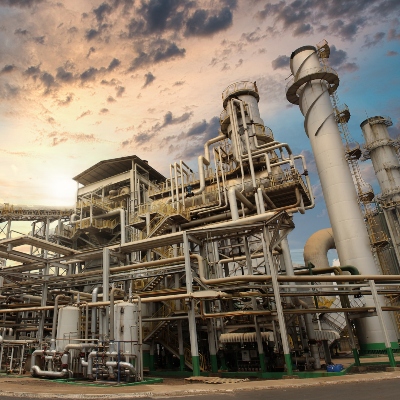How can we help you?
We provide comprehensive Blowers, Vacuum Pumps, Gas Treatment and Compressor Solutions for Carbon Capture Technology projects, providing our value in every step of the CCS process, from input gas feed to CO2 end use application.
Our purpose is to help your projects reach their full potential by harnessing many decades of pressure and vacuum expertise and our industry-leading range of rotating equipment technologies.
Our ambition is to help the realisation of Net Zero and make life better for everyone through our total solution provider approach; deploying mission-critical gas blower, vacuum and compressor technology into the sustainable energy sector and setting new industry standards.
Direct Air Capture and Storage (DAC+S) is a carbon removal solution: it captures CO₂ directly from the air, which is then permanently stored or used as an industrial ingredient. Post combustion capture is the most popular form of carbon capture as fossil fuel power plants can be retrospectively fitted with CCS technology.
Direct Air Capture (DAC) is the process of capturing carbon dioxide (CO2) directly from the atmosphere and generating a stream of carbon dioxide (CO2) for sequestration or utilization for production of carbon-neutral fuel and windgas.
Carbon dioxide is removed when the ambient air makes contact with chemical media, typically sortbents or an aqueous alkaline solvent. The chemical media are subsequently stripped of the carbon dioxide through the application of heat, resulting in dehydration and compression.
Direct Air Capture technology uses rotating equipment such as vacuum pumps to draw in air from the atmosphere to allow the Carbon within the air to bond to chemicals known as sorbents. The sorbent are then heated to release the captured carbon dioxide.
| Blower & Vacuum | Compressor | Gas Treatment | Fluid Handling | |
| Air Feed Stage 1 Separation | ||||
| Gas Feed to Stage 2 Separation | ||||
| CO2 Compression / Liquefaction | ||||
| Compressed CO2 to Transport or Storage | ||||
| CO2 Processing at end use application |
| Blower & Vacuum | Compressor | Gas Treatment | Fluid Handling | |
| Fuel Feed Air to Combustion Chamber | ||||
| Air Feed to Combustion Chamber | ||||
| Flue Gas feed to CCS Unit (absorber-stripper) | ||||
| CO2 Compression/ Liquefaction | ||||
| Compressed CO2 to Transport or Storage | ||||
| CO2 Processing at End Use Application (EOR,...) |
Pre-combustion capture is the process of removing carbon before combustion is completed. This process is often applied in fossil-fuel power plants or processes that are heavy producers of CO2 such as fertilizer and chemical manufacturing or waste incineration.
CO2 is captured from the gases in the flue or other point sources. Industrial pre-combustion carbon capture is more widespread and currently used on smaller than would be required in a power plant.
In pre-combustion carbon capture, when the fossil fuel is partially oxidized, for example a gasifier, the CO from the resulting syngas (CO and H2) reacts with added steam (H2O) and is shifted into CO2 and H2. The CO2 can then be captured from a relatively pure exhaust stream. The H2 can be used as fuel; the CO2 is removed before combustion.
There are advantages and disadvantages to pre-combustion versus post combustion capture. CO2 is removed after combustion, but before the flue gas reaches atmospheric pressure. This process is standard and at the same scale as required for power plants in the majority of CO2 capture processes within industrial application.
| Blower & Vacuum | Compressor | Gas Treatment | Fluid Handling | |
| Fuel Fee to Gasifier | ||||
| Air Separation Unit | ||||
| Oxygen Feed to Gasifier | ||||
| Nitrogen By-product Processing | ||||
| Slag and Ash Pneumatic Transport | ||||
| Air and Gas Feed to Turbine | ||||
| CO2 Compression/Liquefaction | ||||
| Compressed CO2 to Transport or Storage | ||||
| CO2 Processing at End Use Application (EOR, ...) |
Oxy-fuel combustion burns fuel in pure oxygen. In order to limit the flame temperatures to levels seen during more conventional combustion, the cooled flue gas is recirculated and injected into the combustion chamber. The majority of oxy-fuel flue gas consists of water vapour and CO2. The water vapour is condensed through cooling. This results in an almost pure stream of CO2.
Oxy-fuel combustion within Power plant processes can be referred to as "zero emission" cycles. This is due to the fact that the CO2 stored is not a fraction of the amount removed from pre- and post-combustion capture flue gas streams. A small fraction of the CO2 inevitably ends up in the condensed water. To w which will need to be treated or disposed of appropriately to warrant the label "zero emission".
Our technology-agnostic and consultative approach leads to optimal solutions for your carbon capture project, capable of prototype and pilot development for concept validation, evolving into full-scale serial production sizes. Our capabilities range from developing and deploying highly standardized offerings, to creating deeply customized solutions, meeting the most challenging requirements.
Ingersoll Rand has the broadest portfolio of air and gas blower, vacuum and compressor technologies for Carbon Capture applications, covering both Capture-at-Point-Source (post-combustion, pre-combustion and oxy fuel) processes, as Direct Air Capture applications. We have excellent capabilities to develop and introduce new rotating equipment solutions in order to meet the increasingly demanding specifications of the Sustainable Energy marketplace.
We provide solutions at every step of the carbon capture process.
Learn how our blowers, vacuum pumps, gas treatment systems, and compressors enhance each stage of the CO2 capture and storage (CCS) process, from gas intake to CO2 utilization.

Our Team of Experts
Our teams provide innovative, reliable and cost effective solutions that can scale as your projects grow. We are successfully partnering with dominant Carbon Capture Technology & Solution developers in order to produce scalable total systems and their go-to-market execution.